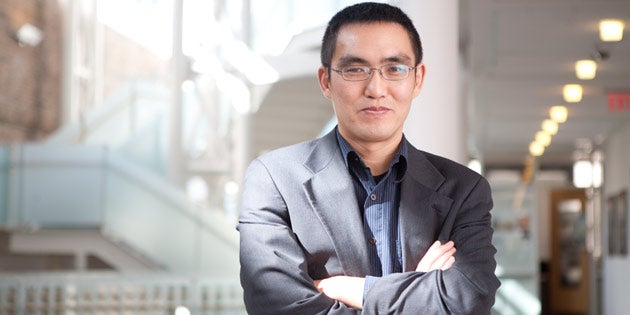For visitors, Charleston’s mild winter weather makes the city as inviting in January as it is in spring or summer (even if, for locals, any temperature below 50 is freezing). That might explain why late winter kicks off the Holy City’s biggest bump in tourism; this time of year – from late winter to early summer – is a pivotal period for tourism here, in part due to the series of events that populate the calendar. Just ask Bing Pan, who directs the College’s Office of Tourism Analysis.
“The importance of this season for Charleston’s tourism industry is huge,” says Pan. “The number of hotel room nights booked during this time is greater than at any other time of the year, especially on weekends. Our research tells us that peninsular Charleston hotels are nearly at capacity most weekends in the spring, and those numbers correlate closely to events that take place here.”
Pan, who teaches within the Department of Hospitality and Tourism Management, says that the Office of Tourism Analysis has been examining Charleston’s tourist industry for 10 years. He and his colleagues conduct ongoing research on behalf of the Charleston Area Convention and Visitors Bureau (CVB), and they engage in special projects for the City of Charleston and other entities such as the City of Folly Beach.
“We handle roughly 10 to 15 specific studies each year. Working with Wayne Smith and Robert Frash from our department, we collaborate with events such as the Southeastern Wildlife Exposition (Feb. 13-15, 2015), the Festival of Houses and Gardens (March 19-April 19, 2015), the Charleston Wine & Food Festival (March 4-8, 2015), and the Lowcountry Oyster Fesitval (January 24, 2015). We also survey tourists directly. Over the last decade, we’ve gleaned responses from more than 5,000 individuals.”
EXPLORE: Find out more information about student research and internship opportunities in the School of Business.
Although hotel room nights are an important metric in this work, Pan’s office looks at a wide array of data, including the media coverage and the impact on the community that such events generate.
This broader picture, he says, plays a vital role in the work his office does to help Charleston County assess applications for its accommodations tax grants. “Working with the CVB and Steve Litvin – a colleague from our department – we’ve developed a formula to assess three key areas: the economic impact, the media impact and the impact on our community. The latter we gauge in many ways, but we primarily look at how many Charleston area residents are hired by that particular event or festival.”
Pan adds that the close connection his office shares with the tourism industry also offers important opportunities for students. “We regularly engage students as researchers,” he explains. One particular student, Beth VanDorpe ‘15, interned for the Preservation Society of Charleston, engaged in an effective Google AdWords campaign for that organization. “Her excellent work allowed her to land an internship with the CVB, and now there’s the potential of a full-time role there as well.”
Charleston’s great slate of events, says Pan, offers numerous opportunities for students regarding internships, volunteer experiences and paid positions. “We have several students who have been hired by the Charleston Wine & Food Festival, and many, many students have interned there and still do. So, that festival and Charleston Fashion Week, and SEWE and so many others are very important to the local economy, and for our students, they’re very important as well.”






